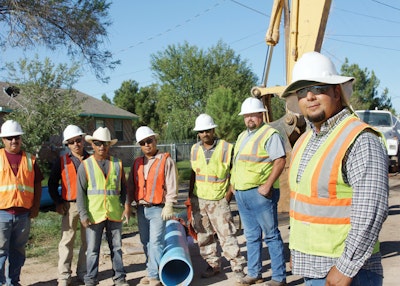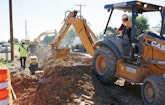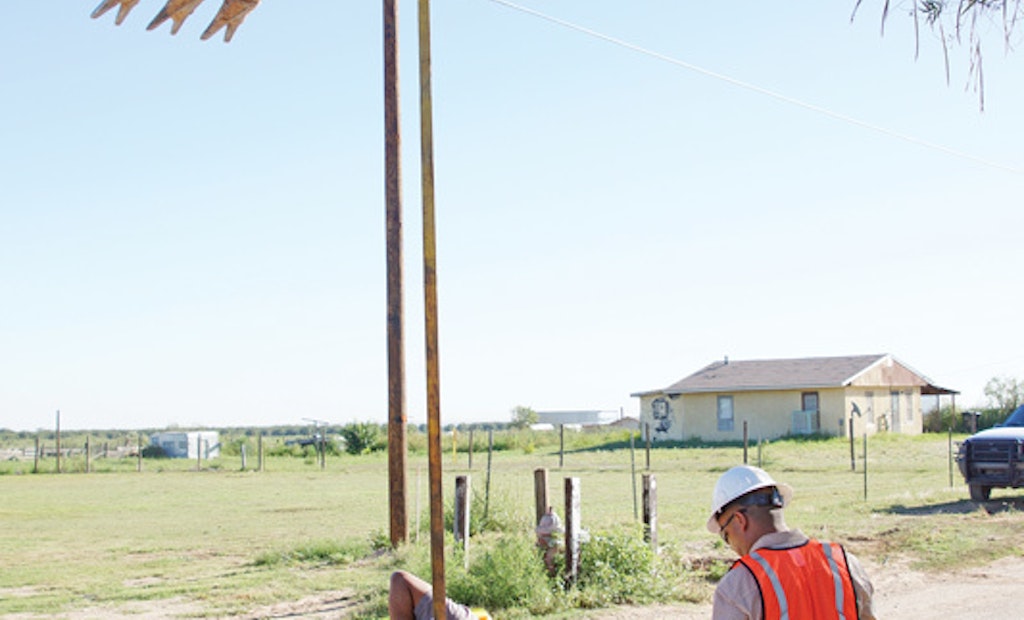Interested in Trucks?
Get Trucks articles, news and videos right in your inbox! Sign up now.
Trucks + Get AlertsCarlsbad, N.M., was founded in the 1890s as such colorful characters as Charles B. Eddy and Sheriff Pat Garrett (of Billy the Kid fame) diverted water from the Pecos River to massive cattle ranches. Today, a spike in population built on an oil and gas boom has challenged the municipal distribution system and again made water supply a critical issue for the city’s development.
In 2010, Carlsbad’s population stood at about 26,500. Midway through 2013, the population has skyrocketed to almost 35,000, largely the result of increased oil and gas exploration and extraction in the state’s estimated 2,000 oil and gas fields.
No longer dependent on surface water from the Pecos River, Carlsbad draws 98 percent of its water from the Capitan Reef Aquifer using wells drilled in the Sheep Draw Well Field about eight miles southwest of town. All water is drawn from the aquifer under water right allotments.
A 33-inch transmission main and four ground storage reservoirs with a capacity of 16 million gallons have met the town’s water needs for many years.
Water demand increases
Luis Camero, director of the Carlsbad Utilities Department, has worked with the department since 1995. “The area is subject to drought, but the aquifer runs through fractured limestone that allows it to recharge quickly,” he says. “We’ve had enough to meet our needs, but this is high desert. With some years where it hasn’t rained and an increase in fracking, we were starting to use more than our allotment by 2012.”
The city isn’t required to sell water to drillers — they also import water and purchase it from ranchers and landowners — but it attempts to meet their needs, to raise revenue and to encourage economic growth.
A local mine, Intrepid Potash, offered half its unused water allotment to the city at no cost to help it through 2012. However, the arrangement didn’t offer a permanent solution.
Carlsbad’s ace in the hole is the Double Eagle Water System, located approximately 30 miles to the northeast. The system draws on the distinct Ogallala Aquifer and the city currently uses it to provide untreated water to industrial customers including the oil and gas industry, agriculture and government users such as the Department of Energy’s 600-employee Waste Isolation Pilot Plant for deep geological storage of radioactive waste.
Tapping new water sources
“The quality of the raw water is much softer than the quality of the raw water we already treat here,” says Camero. “Along with our current system, we have about 17,000 acre-feet of water combined, which puts us into a good zone regarding the aquifer and should last us another 100 years. However, because of the limitations of the transmission system, we can only currently bring 200 gallons per minute of Double Eagle water into town.”
The city is currently embarking on a $45 million project to expand transmission capacity from Double Eagle with 26 miles of 24-inch pipe to be installed along U.S. Highway 62-180. Approximately 13 miles of existing 12-inch water line will be upgraded to 16-inch.
“When we get the Double Eagle system online, we will be able to draw water at a rate of 4,500 gpm,” says Camero. “We plan to rely on it during the summer while the Capitan Reef is recovering and then switch the sources during winter months.”
Much of the city’s current water system is classified as over 20 years in age and rated in fair to good condition. It consists of approximately 24 miles of transmission lines ranging from 14 to 33 inches in diameter, and 230 miles of distribution lines ranging from 1 to 12 inches. Construction materials include a mix of reinforced concrete pipe, steel, cast iron, ductile iron, asbestos cement and PVC. Most of the older pipes are located within 3 feet of the surface, with newer pipes buried at 4 feet.
Limits placed on in-house work
Some repair, replacement and expansion work is performed in-house, but the New Mexico Environment Department sets strict limitations of 1,200 feet of water line replacement in any six-month period without a full engineering study.
“If it involves an engineering study, it’s more efficient to offer that work to a contractor,” says Camero.
The utility had offered to pilot a pipe bursting program in the state, but the Environment Department set strict rules on implementation.
“We thought it was the ideal technology for expanding a 6-inch asbestos cement pipe, but the state wanted us to promise to remove all traces of fractured asbestos pipe from the ground after bursting,” says Camero. “At that point, you might as well replace the pipe. However, we’re hoping to burst some clay pipe, which we believe will be considered a natural material that can remain in the ground.”
The city has incorporated utility expansion into its master plan for growth, Carlsbad 2030. Challenges of the plan, however, include assessing actual population figures in a city currently inundated with temporary workers and recreational vehicle encampments.
Relieving pressure on infrastructure
“The current economic boom in Carlsbad and surrounding areas has put tremendous pressure on existing infrastructure,” says Stephanie Shumsky, director of Planning, Engineering & Regulation with the city. “We continuously receive requests to expand water lines, sewer lines and roads, and despite our planning documents, growth occurs where landowners are amenable to it. It’s a constant struggle to plan and to manage utility and infrastructure extensions where growth will be sustained for the long term and have the greatest number of users, rather than where it’s needed for the short term. These decisions require a clear understanding of not only the needs of the community during the ‘boom’ time, but also the needs of the community that will be here long after the boom ends.”
The city adopted the Infrastructure Reimbursement Program in 2009, whereby the city reimburses developers a portion of the cost of constructing utilities and assumes ownership of the system. This allocates more of the cost to those requesting service and less to the taxpayer.
The city takes advantage of developer-initiated infrastructure expansion wherever possible. For example, in the current Elgin Road water and sewer project, development of sewer infrastructure in a subdivision currently under construction has allowed the city to leapfrog to an adjoining annexed area where homeowners have historically used septic systems.
“We worked with the developer to upsize the pumps to accommodate the annexed area, adding 10 square miles of new sewer coverage,” says Camero.
The city is currently conducting an area drainage study and planning a system that will result in no street flooding during a 25-year precipitation event.
“The more development occurs, the more stormwater runoff we have due to the increased amount of impervious area,” says Shumsky. “This creates flooding on roadways and decreases the time it takes water to reach the Pecos River, which then rises more quickly.”
A surprise mid-September rainstorm did just that, recharging aquifers but flooding the Pecos.
The study will provide recommendations for drainage improvements, which will be implemented as budgets allow.
GIS mapping almost complete
In-house efforts to map infrastructure using the geographic information system have been ongoing for a decade and are nearly complete. However, current GIS waterline mapping activity is concentrating on the new infrastructure to bring Double Eagle water to Carlsbad. The system is being combined with maps of roads, rights of way and land available for development.
“By having everything mapped, when someone comes in for information about development in a certain area of town, we will have the information at our fingertips,” says Shumsky.
In the wake of system growth, the Public Utilities Department recently split its responsibilities between two directors. Camero kept the water and sewer systems in his portfolio.
“As an engineer, this is the best part of the job for me,” he says. “I really love dreaming up these projects and then being able to execute them. The city’s future depends on it.”










